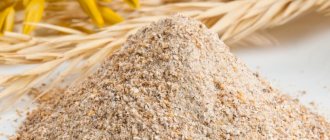Sweet peppers are vegetables; they can be called vegetable peppers or capsicums. This is a plant from the Solanaceae family. Spicy pepper, which is usually seen in the form of peas or ground into powder, belongs to the Pepper family. Sometimes sweet pepper is called bell pepper, apparently due to the fact that after Europeans brought the plant from America, Bulgarians fell in love with this plant for its pleasant taste and beneficial properties of sweet pepper.
Sweet pepper chemical composition
The concept of sweet peppers includes varieties of vegetable peppers, which include salad peppers and thick vegetable peppers. The fruits of these plants, from a botanical point of view, are false berries, hollow inside. The shape and color of sweet peppers can be very different; there are thin-walled and thick-walled varieties, with fruits:
- elongated
- rounded
- cone-shaped,
- cylindrical
The main color of fully ripe peppers can be:
Red capsicum: types, beneficial properties
Capsicum is an annual herbaceous plant of the Solanaceae family. This is an agricultural vegetable crop, the varieties of which are usually divided into sweet and bitter (spicy). I will share with you useful information about the latter:
Red capsicum: general information
Red capsicum (Capsicum annuum) is a bitter variety. Tropical America is considered the birthplace of this plant. It was grown by ancient tribes living in Peru. Hot peppers were brought to Europe by Spanish and Portuguese sailors after the discovery of South America. They called this hot pepper "Indian".
Nutritional value of sweet bell pepper
Although now there are already purple, orange, and white peppers. But in terms of the content of vitamins, minerals, and nutritional value, sweet peppers are very similar, although there may be slight differences in the amount of certain substances depending on the variety, color and place of cultivation. Sweet pepper fruits contain the following vitamins:
- RR
- group B 1, 2, 6, 9
- TO
- E
- WITH
It should be noted that in terms of the amount of vitamin C, peppers are superior to many fruits and berries. And although they contain less of this vitamin than rose hips, they contain about 4 times more than lemons, and among vegetables they are the absolute leader in vitamin C. Peppers are also rich in minerals. They contain micro- and macroelements:
- iron
- iodine
- zinc
- chromium
- potassium
- magnesium
- phosphorus
- sodium
The nutritional value of 100 grams of pepper is 26 kcal. Contains:
- proteins, about 1.6 g
- fats, mainly in seeds, 0.1 g
- ash 0.6
- dietary fiber about 2 g
Thus, carbohydrates account for about 20 kcal. Proteins contain both nonessential and essential amino acids, although in terms of their composition, and they lack only two essential amino acids, such as arginine and phenylalanine, sweet pepper proteins are not considered complete. In addition to the substances listed, peppers also contain complex chemical compounds.
The benefits and harms of hot pepper for men's health
The stronger sex should not neglect this spice. Scientists have found that hot pepper has a positive effect on the male body:
- increases testosterone levels;
- prevents baldness;
- restores and enhances potency;
- prevents the development of inflammation of the prostate gland;
- gives the body strength and increases endurance;
- Sex life becomes brighter and richer.
Important ! Men need to periodically include hot red pepper in their diet.
In general, red pepper has a beneficial effect on the human body. It helps fight colds, normalizes the circulatory system, cleanses blood vessels, promotes hair growth and improves the condition of facial skin. Doctors recommend using it for atherosclerosis, rheumatism and gout, asthma and diarrhea.
The burning product helps not to gain excess weight, improves metabolism, and removes waste and toxins from the body. Many scientists are inclined to believe that pepper is an excellent prevention of cancer.
The vegetable has an analgesic effect and lowers blood pressure. However, for hot pepper to be beneficial, it must be consumed correctly.
Like any product, red pepper has contraindications; it should be used with caution when:
- ulcers and gastritis;
- diseases of the intestinal tract;
- kidney diseases;
- prostatitis;
- migraine;
- sleep disturbance;
- increased excitability.
Standards of use
Despite the positive effect that bitter pods have on the human body, precautions should be taken when consuming it. Do not overuse this vegetable so as not to provoke exacerbation of gastrointestinal diseases.
Determining the daily intake of pepper is problematic due to the fact that in different varieties the taste can be more pronounced or weaker. On average, you can eat up to 15 g (1 tablespoon) in ground form, and 1-2 pods per day in fresh form.
Beneficial chemical compounds in sweet peppers
Although there is not much fundamental difference in the chemical composition of multi-colored peppers, it still exists. Bright red peppers are the leader in the content of a chemical compound called lycopene. It is responsible for the red, orange and yellow color of the fruit. Lycopene is not produced by the human body; it can only be obtained through food.
This substance slows down oxidative processes and protects the body from cancer cells. Green pepper is the leader among bell peppers in terms of the content of p-coumaric and chlorogenic acids. These substances have antiviral activity, including acting on the herpes virus. Slows down the growth of pathogenic microorganisms such as Staphylococcus aureus.
Green bell peppers contain the chemical phytosterol, which can cleanse the body of bad cholesterol. Phytosterenes also have anti-cancer activity. Like any food product, bell peppers can be recommended in some cases and should be avoided in others.
Sweet red pepper
Vegetables → Sweet red pepper
Red pepper is the fruit of a herbaceous plant, resembling a large pod in appearance, which, depending on the variety and stage of maturity, can be dark or bright red, orange, and when unripe, green. Red pepper has a high vitamin content. In terms of vitamin C content, it significantly exceeds even such a vitamin fruit as lemon. Red pepper contains a special substance - capsaicin, which has a very spicy and “hot” taste. Depending on the amount of capsaicin, sweet and bitter peppers are distinguished. Its best variety, Bulgarian, is usually bright red in color when fully ripe. Unripe sweet peppers are green in color.
100 g of pepper contains 150-250 mg of vitamin C, with a daily requirement of about 100 mg. Vitamin C, which is contained in pepper, has antihistamine properties and therefore makes breathing easier. Peppers are rich in carotene and almost all B vitamins, especially B1 and B2. Pepper fruits also contain healthy sugars, essential oils, and nitrogenous substances. Scientists have discovered potassium, sodium, calcium, iron, phosphorus, sulfur, chlorine and silicon in the juicy pods.
The beta-carotene and vitamin C contained in peppers help prevent the formation of cancer cells.
These substances have a therapeutic effect on cancer patients. Red pepper treats digestive disorders and ulcers. Green peppers are rich in p-coumaric and chlorogenic acids, which bind and remove nitroxides, potential carcinogens, from the body. Red peppers, like tomatoes, contain lycopene, which prevents the development of cancer. A half cup of chopped bell peppers a day can help prevent cancer and heart disease. Composition 100 gr. product:
| water, g | 90 |
| proteins, g | 1.3 |
| fats, g | sl. |
| carbohydrates, g | 7.2 |
| mono- and disaccharides, g | 5.2 |
| fiber, g | 1.4 |
| starch, g | 0.1 |
| pectin, g | 0.4 |
| organic acids, g | 0.09 |
| ash, g | 0.6 |
| potassium, mg | 163 |
| calcium, mg | 8 |
| magnesium, mg | 11 |
| sodium, mg | 19 |
| phosphorus, mg | 16 |
| iron, mcg | 600 |
| iodine, mcg | 3 |
| cobalt, µg | 3 |
| manganese, mcg | 160 |
| copper, µg | 100 |
| fluorine, mcg | 7 |
| zinc, mcg | 440 |
| vitamin B-carotene, mg | 2 |
| vitamin E (tocopherol), mg | 0.67 |
| vitamin C (ascorbic acid), mg | 250 |
| vitamin B1 (thiamine), mg | 0.1 |
| vitamin B2 (riboflavin), mg | 0.08 |
| vitamin B9 (folic acid), mcg | 17 |
| vitamin PP (niacin), mg | 1 |
| calorie content, kcal | 27 |
| Attention: because Other data sources, more precise product data and other products were used to compile this table - see Recipe Ingredients Analyzer (enter product name and weight). |
Comments
| Dmitry: lyrics - means “traces”, that is, such an insignificant amount that one can consider it zero, although formally they exist. |
| Natalya: It’s really not clear what the word means. in the fats column? |
| vika: what does the word mean? in the fats column? |
| Sveta: Just “half a cup of chopped” sweet peppers will help prevent cancer and heart disease? And if you eat it just like that, won’t it help?) |
| RG: Great for early diabetes |
Add a comment
The benefits and harm of sweet peppers
Given the low calorie content and high content of vitamins and other useful substances, sweet peppers can be included in many low-calorie food systems, both fresh and after short-term heat treatment. Sweet peppers should be present in the diet of people suffering from:
- anemia
- vitamin deficiency
- metabolic disorders
- immunodeficiency states
- cardiovascular disorders
- oncology
It should be said that high anti-cancer activity makes sweet peppers useful for both women and men. They can alleviate the progression of breast and prostate cancer. Sweet peppers have anti-sclerotic properties. They not only cleanse blood vessels from plaques of “bad” cholesterol, but also make the walls of small vessels more elastic.
Eating fresh sweet peppers can be considered an excellent prevention of strokes and heart attacks. Eating sweet peppers will help diabetic patients avoid a sharp increase in blood glucose levels. During the season, peppers should be eaten either fresh or after short-term cooking.
Benefits and harms
Important! The information presented in the material is for informational purposes only. Before use, be sure to consult a specialist.
There are many more advantages to eating bell pepper than disadvantages. Scientists have long proven its benefits for human health. Let's take a closer look at the effect of pepper on the body when consumed in moderation.
- Immunity. The daily content of vitamin C in this vegetable indicates its strong immunomodulatory effect. Pepper pods contain a large amount of antioxidants, as well as sulfur-containing compounds, which are the best anti-cancer protection.
- The cardiovascular system. The high percentage of potassium in bell peppers lowers blood pressure. Also, sufficient phosphorus content supports blood circulation, relaxing veins and strengthening blood vessels. The large amount of iron in pepper works great against anemia.
- Eyes. Friendship with bell pepper helps protect against ophthalmic problems. It has been scientifically proven that the vegetable contains more than thirty types of carotenoids, which protect against macular degeneration of the eyes and cataracts.
- Central nervous system. The presence of B vitamins, potassium and magnesium improves psychological health. Also promotes the production of melatonin, improving sleep.
- Gastrointestinal tract. Regular consumption treats nausea, diarrhea and other gastrointestinal disorders. Bell pepper helps get rid of excess weight problems due to its low calorie content and lack of fat.
- Respiratory system. Consuming the vegetable fresh or in juice form provides relief from respiratory diseases, including emphysema, asthma and lung infections.
Benefit:
- For pregnant and lactating women. During this period, you should not give up eating sweet vegetables. Folic acid is a must for pregnant women to consume, as it reduces the risk of developing neural tube defects in the fetus. Bell peppers are rich in B vitamins, from which you can get folic acid. During breastfeeding, it is better to introduce pods into the mother’s diet after 3 months, observing the baby’s reaction. At first, it is advisable to heat the pepper. If there is no negative reaction to the product, you can gradually increase the serving size and introduce the vegetable fresh. In the absence of adverse reactions, a young mother is strongly recommended to use pepper in her diet. The vitamins included in the composition help cope with postpartum depression and promote recovery after childbirth.
IMPORTANT! It is necessary to take a pause of 3 months from the moment the child is born, since bell pepper can cause colic or an allergic reaction in an unformed organism.
- For women. Regular use of pods in your diet helps a woman normalize the functioning of her genitals. During menstruation, it reduces pain and depression. Eating this vegetable helps strengthen hair and nails. It also improves blood circulation, having a beneficial effect on the scalp, thereby accelerating the growth of new hair. In addition, pepper contains many substances that help strengthen hair and nails.
- For men. Consumption of bell pepper by men should be regular. The composition of paprika normalizes the functioning of the genital organs, increases potency and increases sperm production.
- For children. You can start getting acquainted with the vegetable no earlier than the baby is 10 months old. This should be a small amount of cooked pepper. It should not be given fresh before 1.5 years. It is necessary to monitor the child’s reaction, as multi-colored pods can cause allergies or gastrointestinal upset.
ATTENTION! Bell pepper seeds do not provide any health benefits, but the greatest concentration of beneficial substances is located in the immediate vicinity of their location.
- The benefits of green bell pepper. Diabetics and overweight people should use green pods in their diet. Phytosterols control fat metabolism, preventing them from being deposited. Peppers of this color contain less sodium, which is a definite plus for patients with kidney disease. The fruits of this vegetable contain 2 times less vitamin C and 9 times less retinol. It has the most bitter taste.
- The benefits of red bell pepper. This is a godsend for hypertensive patients. Perfectly lowers blood pressure and thins the blood, accelerating its circulation. When red, the vegetable has a mild laxative and diuretic effect. Moderate consumption of bright pods controls blood glucose levels and also prevents cancer of the lungs, prostate, ovaries and pancreas.
- The benefits of yellow pepper. The yellow pods are leaders in the amount of vitamin C. Just one fruit can provide the need for the vitamin for 5 days! The bright fruit contains a large amount of lutein, which strengthens the eye muscles and prevents the development of cataracts.
Systematic consumption of yellow pepper prevents the development of bradycardia, ischemia, stroke and heart attack. It is very useful during pregnancy, as it contains a high percentage of iron in its composition.
Benefits in cooked and fresh form
Heat treatment deprives peppers of up to 70% of vitamins. But during the winter period, you should not give up the canned product; the minimum dose of vitamins is still retained in it. The maximum benefit, of course, can be obtained from fresh vegetables. But frozen bell peppers also retain their beneficial properties even when stored in the freezer for a long time.
Possible harm.
Undoubtedly, bell pepper is a storehouse of vitamins and its benefits for humans are obvious. But it is worth mentioning the possible harm of the vegetable. Previously noted as a positive feature of pepper is a decrease in blood pressure. But people with low blood pressure (hypotension) should monitor the amount they eat. The presence of alkaloids and phytoncides provokes increased secretion of digestive juices. People suffering from stomach ulcers, gastritis and colitis should avoid consuming the product fresh. Heat-treated vegetables can be consumed in moderation.
Use of sweet pepper
For homemade preparations, it is recommended to freeze sweet peppers for future use; this will lead to the least loss of beneficial properties. No matter how beneficial sweet peppers are, there are some diseases for which they should not be consumed.
First of all, this is gastritis, gastric and duodenal ulcers during the period of exacerbation. This is due to the fact that in addition to containing their own acids, sweet peppers cause increased secretion of gastric juice. This aggravates the course of the disease and prevents the healing of ulcers. Patients with hypertension, acute renal failure and those suffering from increased nervous excitability should use sweet peppers with caution.
Beneficial properties of red sweet pepper
The introduction of red sweet pepper into the diet has a positive effect on the human body.
The benefits of red sweet pepper are as follows:
- Prevention of anemia, improvement of blood composition.
- Increasing immune status, stopping viral activity during the epidemic season.
- Increasing the tone of the vascular walls - it is especially useful to introduce this product into the diet for rosacea and frequent bleeding from the nose and gums.
- Improving the quality of skin and hair, stabilizing the regenerative function of the epithelium and the functioning of hair follicles. Eating red pepper prevents early baldness.
- A positive effect on the optic nerve helps slow down age-related changes associated with the quality of vision.
- Reducing blood pressure, thinning the blood - due to which it is recommended to introduce the product into the diet for varicose veins and arterial hypertension.
- Stimulates the functioning of the digestive tract and cleanses it of the accumulation of toxins due to the content of dietary fiber.
- Acceleration of metabolic processes in the body, which helps break down subcutaneous fat.
- Stimulates the production of digestive juices, bile and pancreatic enzymes.
- Increasing attention and improving memory, eliminating insomnia.
- Increased stress resistance. Prevents the development of depression, relieves chronic fatigue.
- Normalization of blood glucose levels, reduction of cravings for sweets.
Red bell pepper is useful during pregnancy - it contains a lot of calcium. One fruit of red pepper per day completely replenishes the body's need for ascorbic acid.











